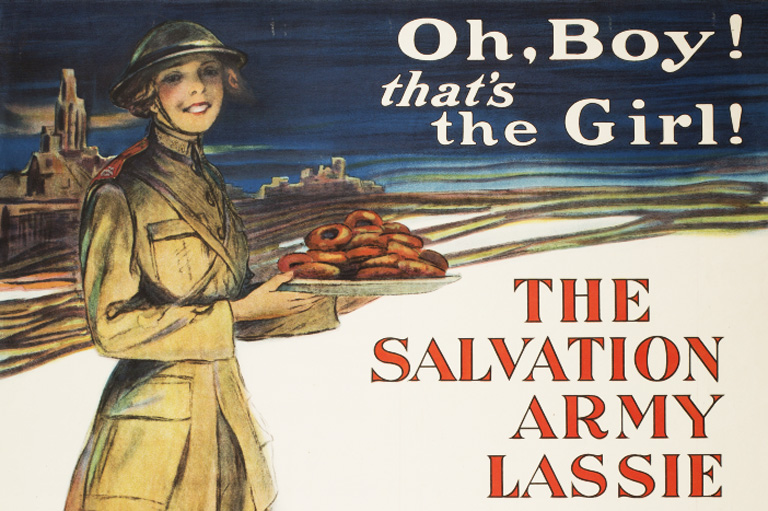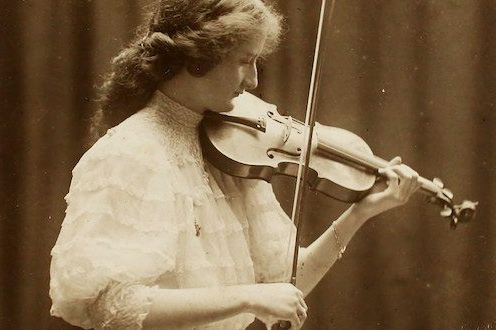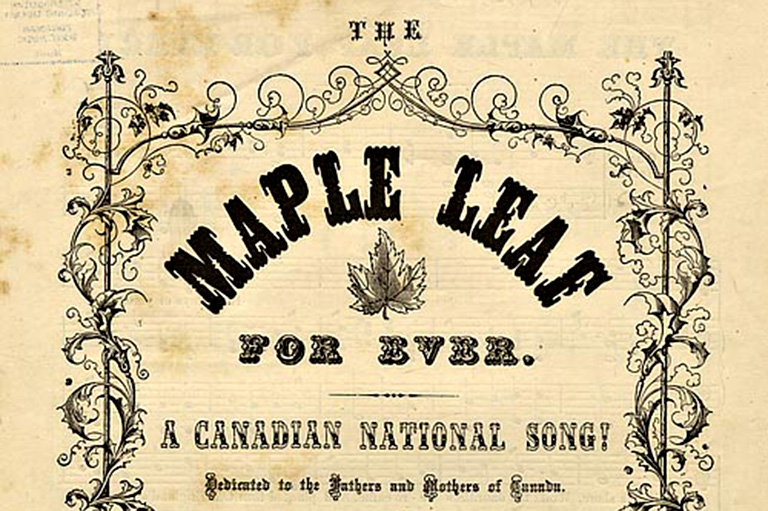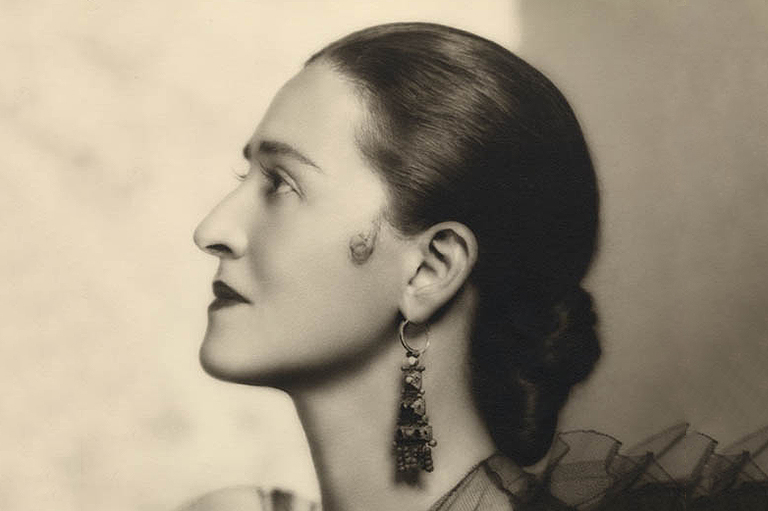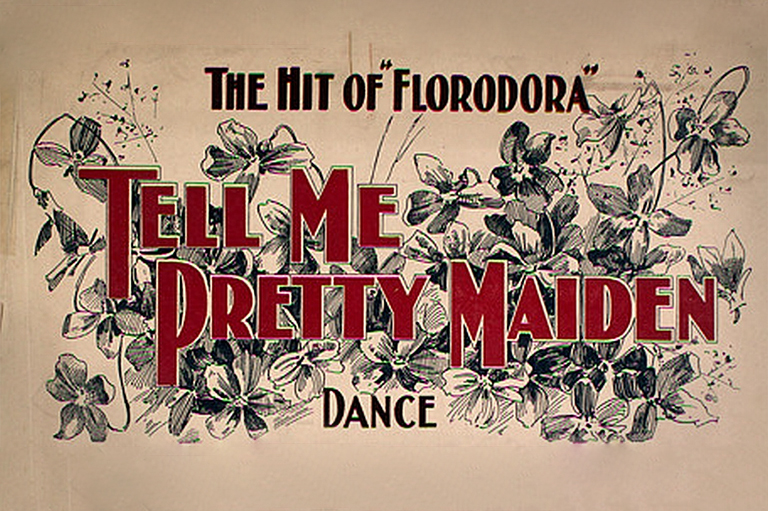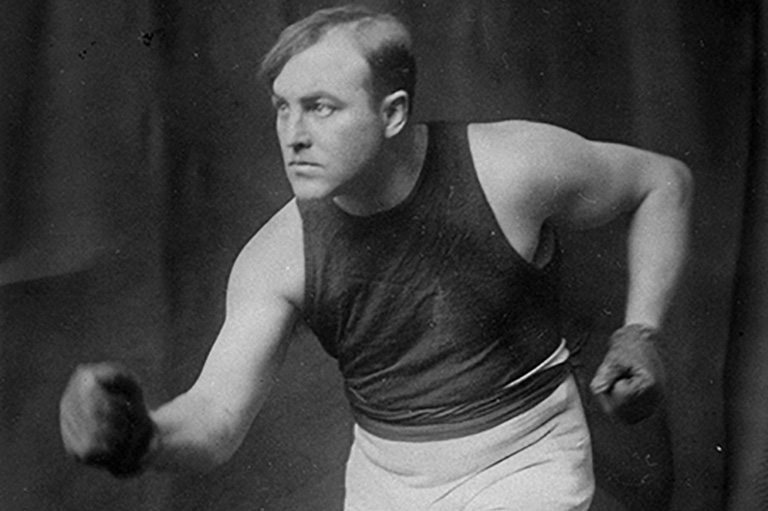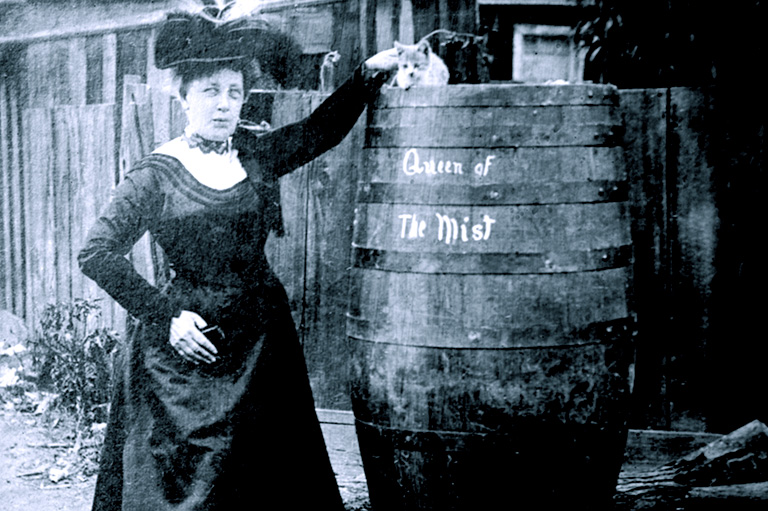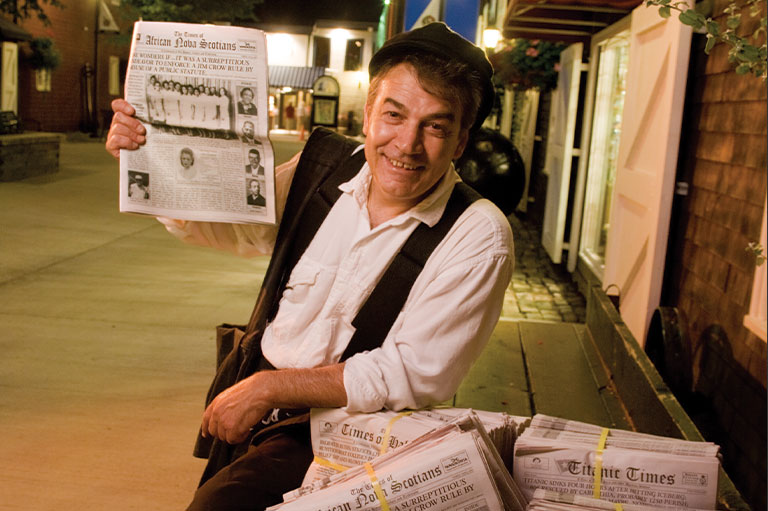Discover a wealth of interesting, entertaining and informative stories in each issue, delivered to you six times per year.
I Like to Do It & The Devil's Dream
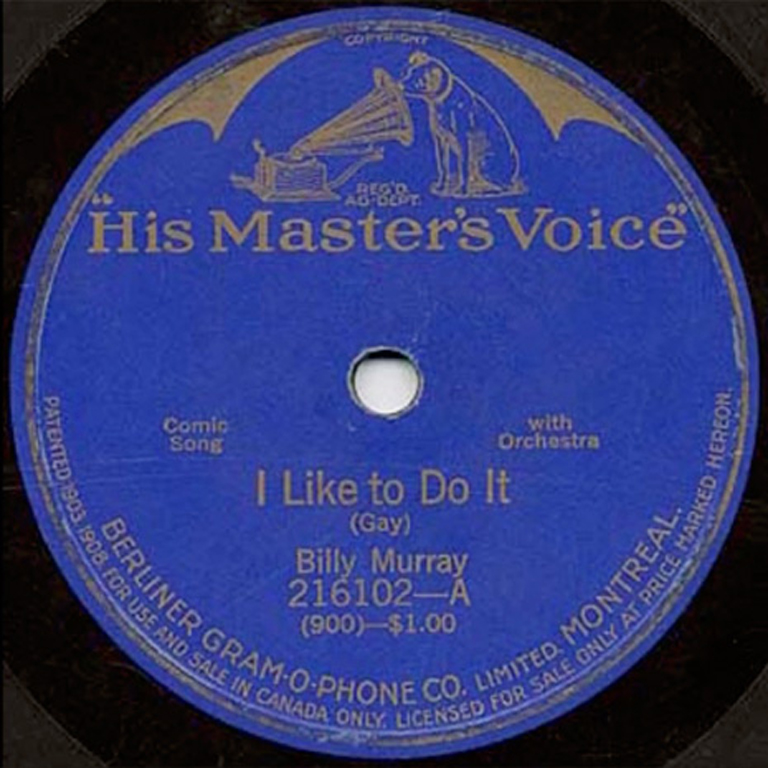
Mark: Well, today you might say we’ve got a real darb of a song we’re going to explore in this podcast.
Joseph: Yes. Some of the folks listening to this might even think that it’s jake or the bee’s knees.
Mark: As you might guess from some of the slang and phrases we’re using, the song “I like to do it” was written and recorded in the Jazz Age — the roaring 20s.
Joseph: That’s right, and some of that same slang also finds its way into the lyrics of this song.
Mark: I was wondering about that, but could you first tell me, is it my imagination or could the phrase used in the title of the song “I like to do it” have the same connotations as we know it today?
Joseph: I’d say it does, and a closer look at the lyrics suggests that this is definitely the case, or at least, that the singer likes to engage in the act of flirting and seduction that will lead to sex. Aside from the phrase “I like to do it” the most repeated word in the entire song is vamp. The word vamp can have a couple of different meanings depending on its context.
The first meaning is either a woman who seduces men or is an aggressive flirt. In the second meaning, the word vamp could also mean to seduce or flirt. In the lyrics of the present song, the latter meaning is the most pronounced, with additional sexual overtones.
In the chorus, you have the words, “you stamp and paw the air, while you vamp, vamp, vamp some lady there.” The singer also sings of how he likes to do that “salty vamp”.
Finally, you hear the repeated phrase “vamp a little lady” which seems to suggest both of the meanings we mentioned earlier. The singer also expresses that this flirting makes him “want to sing, make love and everything.” It’s pretty overt, but also rather playful and deliberately naughty.
Mark: Was this kind of overtness typical of some of the music of the day or even the songs written by Byron Gay, who wrote both the lyrics and music of this song?
Joseph: I think it taps into some of the social and artistic dynamism and shifting sexual mores of the time. Certainly, Byron Gay’s career benefited from this time period and his contribution of songs in musicals by L. Frank Baum and his writing for Broadway and vaudeville.
Gay had moved from Los Angeles to New York with his wife in 1917 to help further his song writing career. In the year 1919 he wrote one of his biggest hits called The Vamp which appeared as a dance number in vaudeville houses in the Greenwich Village Follies of 1919.
For our purposes, this song The Vamp is pretty interesting because it uses the same line “vamp a little lady” almost identically as it is used in the song I like to do it. The rhythm is the same, but the melody changes somewhat. There is also an extant recording of The Vamp on Victor Records from 1919 that featured the vocals of Billy Murray on it.
Mark: Billy Murray — is this the same singer on our present recording of I Like to Do It?
Joseph: Yes it is, and it could be argued that Billy Murray was also critical to some of Gay’s early success. Murray had recorded a version of Gay’s song The Little Ford Rambled Right Along and helped make it an early hit for him.
Mark: Was Billy Murray that popular a singer?
Joseph: He was indeed. Murray was nicknamed the Denver Nightingale and recorded for all of the major phonograph records of the time such as Edison, Victor, Columbia, Zonophone, Leeds and Caitlin, American and the International Record Company. He was particularly famous for his comedy songs and also appeared in vaudeville productions.
Murray was a specialist in humorous matrimonial and ethnic dialect songs. He had developed his singing style in order to be recorded in acoustic records, a process he himself called a “hammering style” which had him almost yelling into an acoustic recording horn.
This helped his voice stand out and be hear in acoustic recording sessions. Acoustic recording was the mode of recording prior to 1925 and had singers and instrumentalists performing in front of a flared metal horn which gathered and funneled sound waves toward a thin diaphragm at the small end of the horn.
The sound waves caused the diaphragm to vibrate, and the vibration made a stylus etch sound waves onto a blank wax rotating cylinder or disc. A performer required a great deal of ingenuity to create a successful acoustically recorded sound.
Murray didn’t enjoy as successful a recording career after 1925 a combination of various factors including the advent of the electric microphone and shifting musical tastes. Murray’s singing style didn’t work as well with the electric microphone and he would be forced to adapt his technique to sing with it.
Murray possessed a clear tenor, singing voice, and sang with excellent diction and enunciation often couple with a more conversational delivery. In some of his comic, songs, he even sang deliberately flat to help heighten the sense of comedy.
Murray had been in contract with Victor and Edison until 1919, after which he would freelance with the major labels. He would later re-sign with Victor in July, 1920. This freelance work allowed Murray to record with Berliner records in Montreal and is what makes the present record special to LAC’s collection.
The present recording was of a series of records he made that were only released in Canada. It was made in 1920 and shows Murray employing all of the tricks and techniques that ensured his success as an entertaining performer and acoustical recording artists. In the present song we hear every word clearly and deliberately. We hear him approach the words conversationally, as well as interject other vocal effects to increase the comedic effects of the lines.
Mark: Is there anything else to which we should pay attention while we listen to the song?
Joseph: I think the song has a really funny structure from a lyrical standpoint. Murray starts out singing, “This is the first verse / the second verse is worse / The next thing before is the chorus” and that’s it for the first verse. It lasts only two lines before launching into a chorus that lasts almost a full minute! There is also a brief bridge toward the end of the song.
All in all, I think that it’s best to sit back and enjoy what Billy Murray does for effects, such as lingering on certain vowels and words to heighten the comedy.
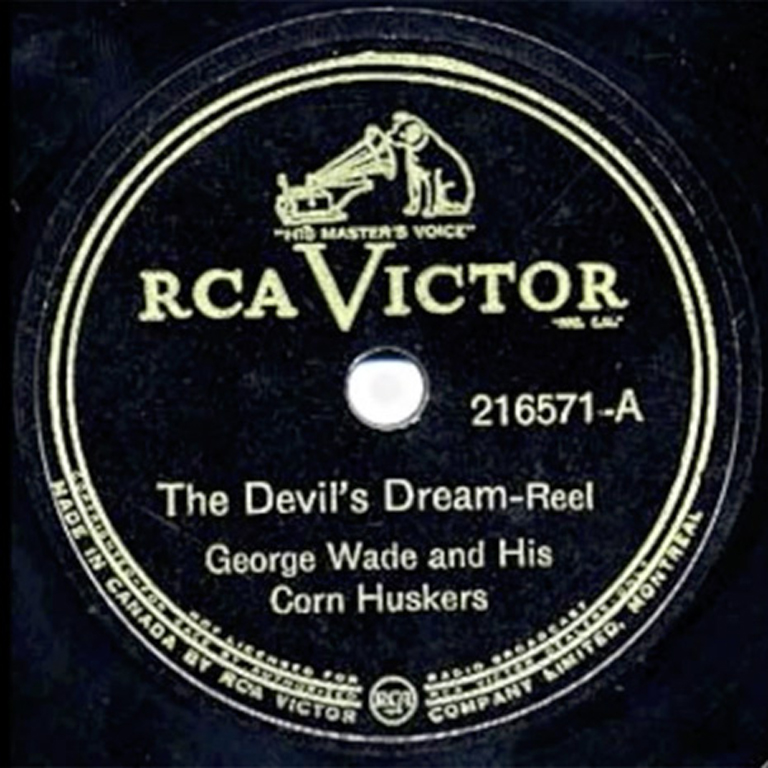
Mark: The title of this song [The Devil’s Dream] tells us that it’s a reel. Could you tell us a bit about what a reel is?
Joseph: The word reel comes from Anglo-Saxon and Gaelic words meaning to whirl. It’s an indigenous and old Scottish dance, and historically was qualified by terms like threesome, foursome, sixsome and eightsome to indicate the number of dancers.
One of the earliest references to the term actually appears in 1590 in a report of the trial of the witches at North Berwick. How fitting that we’re now talking about a tune called the Devil’s Dream!
For our purposes, the term reel both refers to the folk dance type in either Scottish country dancing or Irish dance, and to the accompanying dance tune type. The reel was introduced to Ireland from Scotland in the late 18th century, and was probably introduced to North America through Irish and Scottish settlers.
According to the Grove Dictionary of Music, the reel is the “staple musical fare for square-dances, though in the central and southern USA it is often known by the name breakdown or hoedown.”
Musically speaking, the reel is notated in either 2/2 or 4/4, meaning it’s either two beats or four beats per measure and follows a pretty standard structure. There are usually two parts to the tune, A and B, and in most cases each part is repeated.
This means you’d have a structure like AABB. Each part is typically 8 bars long, so with an AABB pattern, the basic structure would normally accumulate to 32 bars in length. Normally, this pattern is repeated three or four times before a new reel, a new tune is introduced.
Sign up for any of our newsletters and be eligible to win one of many book prizes available.
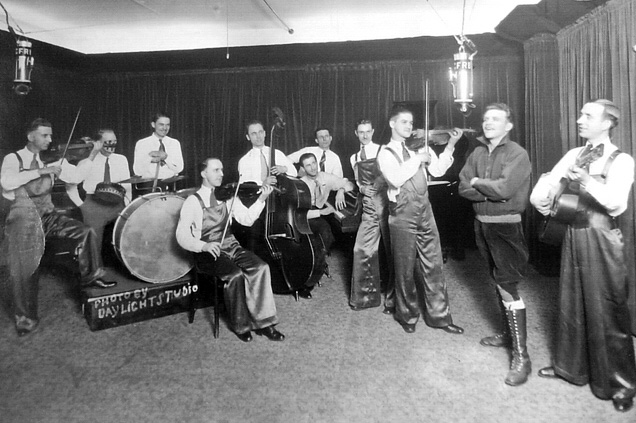
Mark: Does this reel, The Devil’s Dream as performed by George Wade follow this same structure?
Joseph: Yes it does follow this same structure the first time the band plays through the two sections. In this recording, the reel begins and follows the pattern we just talked about: AABB. But then the pattern changes.
Instead of going back to A again after hearing the B section, the band repeats the B section another two times before returning to the A section again. This is where things get a bit more interesting musically speaking in the fiddle line, as the fiddler Jean Carignan begins to add subtle variations to the melodic line like skips, slight changes in directions and trills. These add to the excitement of the music.
Throughout the piece, the rest of the band, composed of banjo, piano and bass, maintains a steady and consistent rhythmic and harmonic background to which the fiddler can weave his melody and variations.
Mark: This reel seems to have two different titles, The Devil’s Dream or The De’il Among the Tailors. Could you elaborate on that?
Joseph: According to the resources I checked such as the Fiddler’s Companion, or books like A Companion to the Reticule in 1830 or Dance Music of Scotland in 1852, the same tune has been known as The Devil’s Dream, De’il Among the Tailors or even Satan’s Nightmare.
Sources indicate that the tune was written in the late 18th century and may have been notated as early as 1800. It is a tune that has enjoyed enduring popularity in Scotland, Ireland and North America ever since it was written.
I’d like to draw particular attention to the title “The De’il among the Tailors” because it refers to the name of a pub game which is a form of table skittles.
Skittles is an old European lawn game and a variety of bowling from which ten-pin and five-pin bowling are descended. The purpose of the game is to use a ball to knock down the skittles. These are similar in shape to bowling pins.
The game of which we’re speaking, Devil among the Tailors, refers to a table-top version of skittles in which one spins a wooden ball hanging from a vertical post in order to knock down nine small skittles arranged in a 3 x 3 square.
I think this is a great image to help us picture the reel itself. Instead of dancers whirling around, we can have a ball whirling in a circle around its vertical post. The music of our reel certainly inspires images of a whirling nature.
Mark: We’ve heard about the music, but could you also comment about George Wade and his Cornhuskers, the performers on this recording?
Joseph: Certainly. According to the Encyclopedia of Music in Canada, George Wade and His Cornhuskers was the most popular Canadian country band of its day. They were based out of Toronto, and performed at dances in Ontario and Quebec from the mind-1920s to the 1940s.
They enjoyed a long performing career and performed on radio broadcasts on CFRB, a Toronto radio station still in operation, the Canadian Radio Broadcasting Commission, precursor to the CBC, and finally on the CBC itself. The band also toured in Western and Atlantic Canada.
George Wade and his Cornhuskers also recorded several 78s for RCA Victor, recording 13 in 1933 alone. The personnel on the recordings ranged from 4-15 musicians playing on instruments such as fiddles, banjos, guitars, piano, bass, the harmonica and Jews’ harp.
It’s important to note that Mr. Wade was the caller in this ensemble, meaning that his job was to call or prompt new dance figures and tunes during the course of the dance. Wade himself didn’t play the fiddle, but did on occasion play the harmonica.
Mark: Any concluding remarks?
Joseph: Perhaps a personal reflection of sorts. I was in high school when the first recordings of Ashley MacIsaac and Natalie McMaster were being released and ushered in a new wave of interest in traditional Celtic and fiddle music.
I can also remember the Tommy Hunter Show on TV when I was younger. Looking back at historical recordings by George Wade and His Cornhuskers reflects the continuity of certain musical traditions throughout our recorded legacy in Canada.
I like the fact that we’re able to trace Canadian involvement in a musical tradition stretching back almost 100 years in our recording heritage, but also back centuries in a musical and dance tradition.
We hope you will help us continue to share fascinating stories about Canada’s past.
We highlight our nation’s diverse past by telling stories that illuminate the people, places, and events that unite us as Canadians, and by making those stories accessible to everyone through our free online content.
Canada’s History is a registered charity that depends on contributions from readers like you to share inspiring and informative stories with students and citizens of all ages — award-winning stories written by Canada’s top historians, authors, journalists, and history enthusiasts.
Any amount helps, or better yet, start a monthly donation today. Your support makes all the difference. Thank you!


